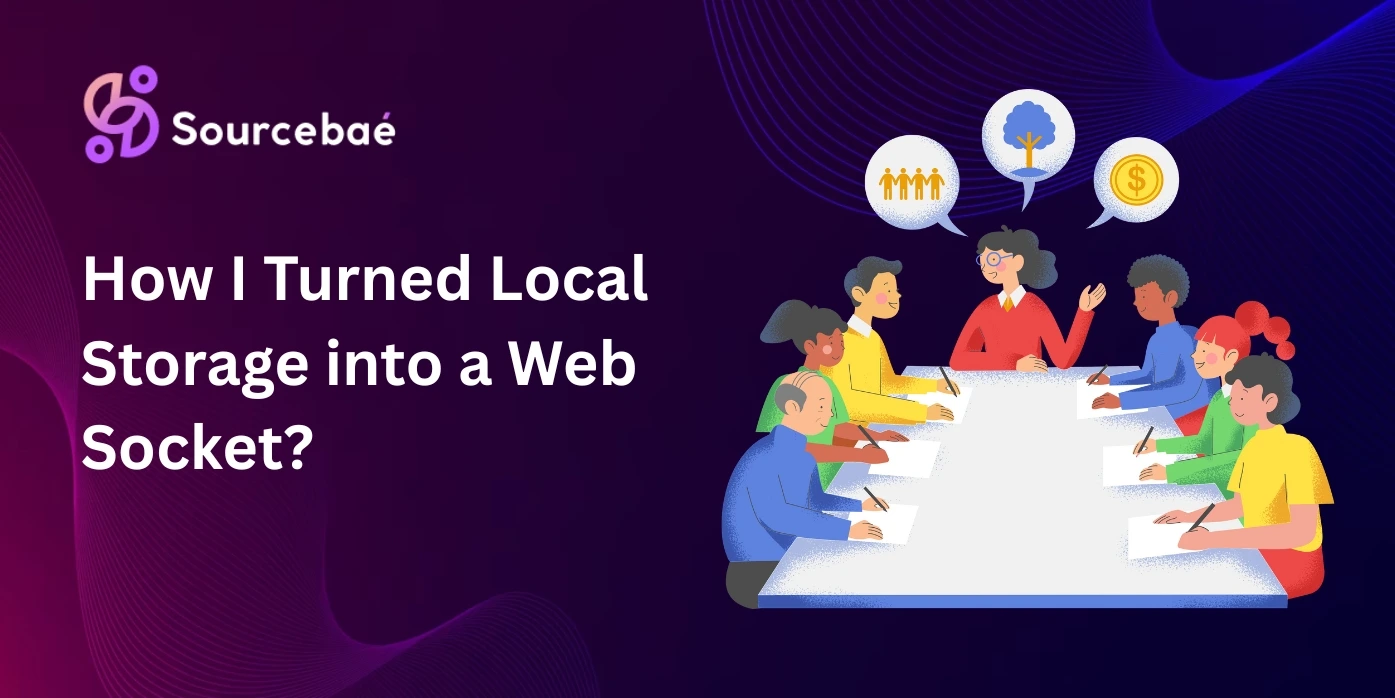In today’s digital landscape, optimizing web applications for efficient data transfer has become paramount. One of the innovative approaches to achieving this is by turning local storage into a web socket. This transformation not only improves data exchange but also enhances user experiences. In this article, we’ll delve into the step-by-step process, its benefits, potential challenges, and some practical insights gained from my own experience.
Turning local storage into a web socket involves bridging the gap between client-side storage and real-time data exchange. It’s about establishing a persistent connection between the client and the server, enabling seamless and instantaneous communication.
Step-by-Step Process
- Initial Setup: Begin by setting up a basic web application with client-side storage functionality using HTML5 local storage APIs.
- Choosing a Web Socket Library: Select a suitable web socket library, such as Socket.io, to simplify the implementation of web sockets.
- Server-Side Configuration: Configure the server to handle web socket connections. This typically involves installing necessary packages and setting up event listeners.
- Establishing Connection: Develop code on the client-side to establish a connection with the server through the web socket.
- Data Exchange: Implement logic for sending and receiving data in real-time. This can involve broadcasting messages to all connected clients or sending data to specific clients.
Benefits of Local Storage to Web Socket Transformation
- Real-Time Updates: By utilizing web sockets, real-time updates become possible, enhancing user experiences.
- Reduced Latency: Web sockets significantly reduce latency compared to traditional polling methods, as they allow data to be pushed from the server to the client instantly.
- Efficient Resource Utilization: Unlike continuous HTTP requests, web sockets maintain a single connection, reducing resource consumption.
- Bidirectional Communication: Web sockets enable both the client and server to send messages, facilitating two-way communication.
- Scalability: This approach supports high scalability, making it suitable for applications with a large number of concurrent users.
Challenges to Overcome
- Complexity: Implementing web sockets might be more complex than traditional client-server interactions.
- Browser Compatibility: Some older browsers might not fully support web socket functionality, requiring fallback mechanisms.
- Error Handling: Real-time connections can be prone to errors and disconnections, necessitating robust error handling mechanisms.
- Security Concerns: Web socket connections should be secured using protocols like HTTPS to prevent unauthorized access or data breaches.
Practical Insights from My Experience
Optimizing Data Exchange
In a recent project, I aimed to enhance a collaborative task management app. By converting local storage into a web socket, I enabled real-time updates on task statuses. Users could instantly see changes made by team members, fostering better coordination.
Seamlessly Handling Disconnects
One key takeaway was the importance of handling disconnects gracefully. Implementing reconnection strategies and notifying users about connection status helped maintain a smooth user experience even during intermittent connectivity.
Balancing Resource Consumption
While web sockets offer efficiency, it’s vital to strike a balance. Excessive connections can lead to resource strain on the server, impacting overall performance. Thus, implementing connection limits and optimizing data payloads is crucial.
FAQs
Q: Can web sockets replace traditional HTTP requests entirely?
A: Web sockets are not designed to replace HTTP requests but rather complement them. They are best suited for real-time scenarios where instant data exchange is essential.
Q: Are there any security risks associated with web socket connections?
A: Yes, security is a concern. Implementing secure protocols like HTTPS and validating user inputs can help mitigate potential risks.
Q: Is it challenging to debug web socket connections?
A: Debugging web socket connections can be tricky, but using browser developer tools and logging mechanisms on the server-side can simplify the process.
Q: Can I implement web sockets without using a library?
A: While possible, using a library like Socket.io streamlines the process, handling cross-browser compatibility and offering helpful abstractions.
Q: Are web sockets suitable for all types of applications?
A: Web sockets are particularly beneficial for applications requiring real-time updates, such as chat applications, collaborative tools, and live data dashboards.
Q: How do I handle scaling with web sockets?
A: Implementing load balancing strategies and optimizing server configurations can help ensure smooth scaling as your user base grows.
Conclusion
Turning local storage into a web socket offers a powerful way to achieve real-time data exchange and enhance user experiences in web applications. While the process comes with its challenges, the benefits in terms of reduced latency, improved efficiency, and bidirectional communication make it a valuable addition to modern web development strategies. By following the step-by-step process outlined in this article and considering practical insights gained from experience, developers can effectively integrate web sockets into their projects and create more responsive and dynamic applications.
READ MORE | How to Become a React Developer?






